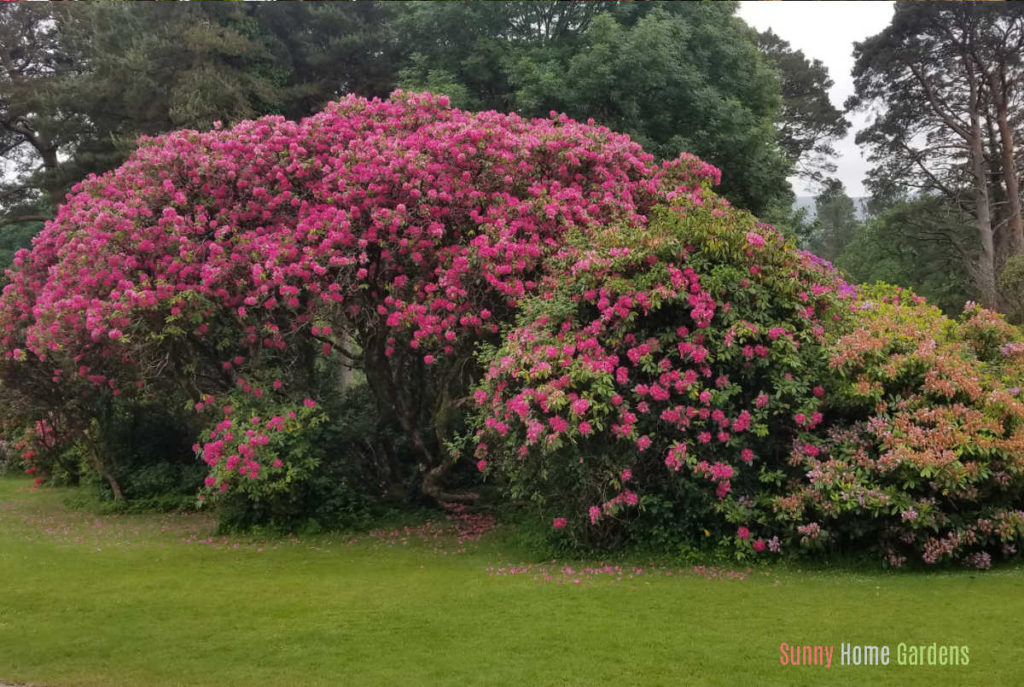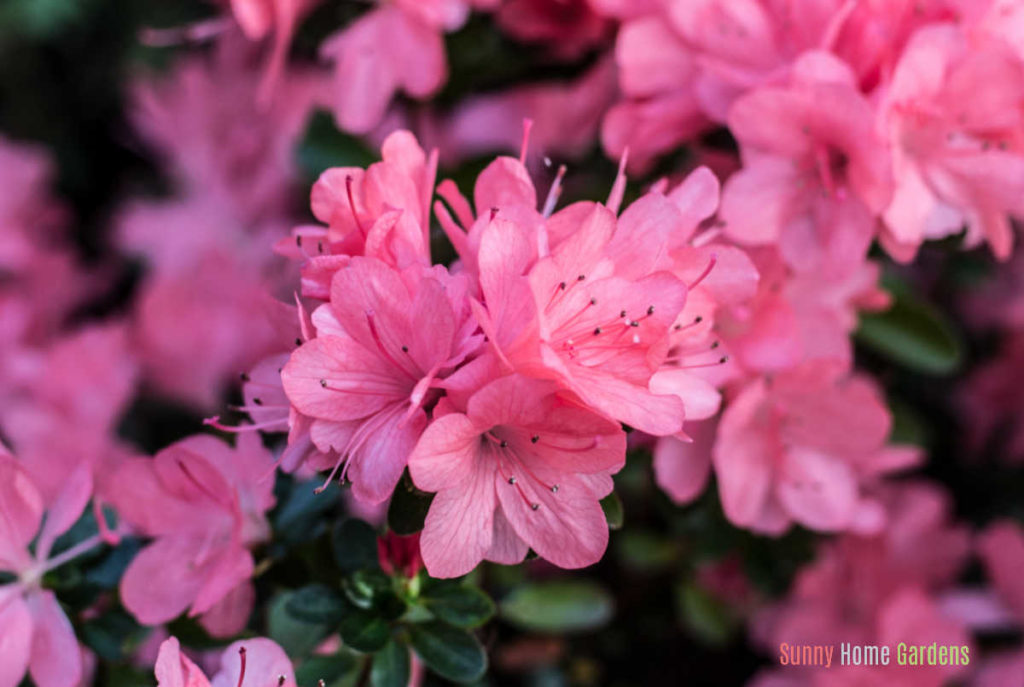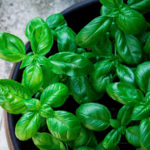If you are wondering what’s the difference between rhododendron vs azalea, you’ll want to see the differences below.

The similarities between rhododendrons and azaleas are amazing. The two plants even have the same Latin name – Rhododendron – but there are also quite a few differences between the plants.
Both azaleas and rhododendrons are popular ornamental shrubs and have beautiful flowers.
There is not a definitive way to tell the differences between the two plants.
There are over 1,200 species within the rhododendron family, each with its’ own unique characteristics. However, there are different characteristics that each plant displays that enable us to tell them apart.
Table of Contents
The Same Family

These two wild-growing shrubs are in the same family and are so closely related that all azaleas are rhododendrons but not all rhododendrons are azaleas. Although they haven’t always been in the same plant group, they now both belong to the genus rhododendron.
They enjoy growing in the same type of environment and are native to moderate climates of Asia, North America, and Europe.
The shrubs grow wild in the moist, mountainous regions of the United States along the Appalachian Mountain range from Maine to Florida. This is where the similarities end and the differences begin.
Shrub Size

Native rhododendrons have no final size.
The shrub can continue growing indefinitely and reach tree-like proportions, reaching up to 20 feet. In their native habitat, they grow leggy and have an indeterminate growth pattern.
Some branches grow along the ground while others grow straight up. They are slow-growing and can be pruned for a manageable size and shape when used in a home landscape.
Hybrid rhododendrons range in sizes that include ground covering shrubs, dwarf shrubs that reach 3-feet when mature, and full size shrubs that can reach around 10-feet in height and width.
Native azaleas can reach up to 20-feet tall and have a spread of 20-feet. Hybrid varieties are typically 2-5 feet tall and wide when mature.
The shrubs can be pruned and kept at a desired shape and height.
Azaleas set their buds for the next bloom season as soon as they drop their old flowers. The shrub must be pruned as soon as flowers fade on the shrub or you risk cutting off the new buds.
Pruning is not necessary to keep the shrub healthy, it’s only done for aesthetic purposes.
Bloom Time

Rhododendrons typically bloom for 3-weeks in mid-spring but may also bloom in early-mid winter in their native habitat. Hybrid rhododendrons are bred to bloom in spring and/or fall.
Azaleas tend to bloom in early spring and produce a multitude of small blooms all over the entire shrub. The shrub will be in bloom for 4-weeks. Some varieties of azaleas produce so many colorful blooms that the shrub itself is not visible – it will look like one large bloom.
When a native azalea is ending its spring-blooming cycle, the native rhododendron is just beginning to open its colorful blooms.
Hybrid varieties of azaleas have been bred to bloom more than just once a year. Repeat blooming azaleas can produce blooms from spring until fall.
Flower Shape
The flower shape and the way the blooms develop on the two shrubs are somewhat different.
Rhododendron Flowers

Rhododendrons have bell shaped flowers and are much larger than azaleas blooms. Several flowers bloom at the end of a stem and open to create a round grouping of blooms. Each bloom is about 1-inch in diameter and the grouping of blooms may reach 6-inches across.
The leaves and stems of the shrub are visible when the rhododendron is in full bloom.
Azalea Flowers

Azalea plants have clusters of tubular or funnel-shaped flowers that develop on the ends of each branch.
The blooms are smaller than rhododendrons, only about 1/2 inch in diameter, and the bloom clusters will be about 3-inches in diameter.
As mentioned previously, the azalea may produce so many blooms that the shrub is hidden and the plant will appear to be one extremely large bloom when viewed from a distance.
The flower stamens vary in number between the two shrubs also. Rhododendrons have 10 or more stamens per flower. Azaleas have 5 stamens per flower.
Bloom Color
Rhododendron Bloom Colors

Rhododendrons bloom colors include white, pink, purple, red, orange, and yellow.
Any of these bloom colors create a striking contrast against the bluish-green foliage of the shrub. Some rhododendron blooms are fragrant and produce a sweet, spicy scent when the flowers first open. All varieties do not produce fragrance when the blooms open.
Azalea Bloom Colors

Azalea blooms are filled with nectar and are very fragrant.
The blooms are vibrant shades of pink, white, red, salmon, yellow, purple, and orange. Hybrid varieties often produce striking bi-color blooms.
There are many more bloom colors for azaleas than rhododendrons.
The deciduous and evergreen azaleas vary in their bloom colors and bloom times.
Leaf Difference
The leaves of rhododendron are different than azaleas.
Both azaleas and rhododendrons have handsome foliage.
Rhododendron Leaves

Each species of rhododendron has a different leaf shape, coloring, texture and size.
Rhododendron foliage are leaves that are large, thick and shaped like a paddle, with dots or scales on the underside.
These are evergreen shrubs but their leaves will change color during the winter months. The dark green leaves will change to shades of red or bronze in the cold months.
Azalea Leaves

Azaleas leaves are shaped like a football and have appressed hairs which are hair parallel to the surface of the leaf. The leaves are soft and pliable and alternate on the branch.
The leaves may also have yellow or white mottling.
Evergreen azaleas will have a change in leaf color during cold weather and as the leaves age. The leaves will turn yellow, red, or bronze in winter or before they fall off of the shrub.
Evergreen azaleas will drop leaves periodically as they get older.
Deciduous or Not
The foliage between these two shrubs varies greatly and will also produce winter interest in the landscape.
Rhododendrons are evergreens shrubs and will have dark green foliage all year. Some hybrid varieties have variegated foliage with splashes of yellow that will help to brighten up a winter landscape.
Azaleas are deciduous but most of these shrub varieties will not drop all their leaves at once. The old leaves drop off the shrub to make room for new leaves. the old leaves change color before falling off.
Many deciduous Azaleas change colors in the fall and put on a colorful foliage show before leaf drop time. the shrub leaves will turn yellow, red, brown, or purple before falling off for the winter.
Pollinator Attracting Blooms

Rhododendron blooms produce pollen, azaleas blooms produce nectar. Both are needed to attract and feed beneficial pollinators and help their species survive.
Rhododendrons are deer resistant and are a good shrub to use as a living privacy fence.
The tall-growing rhododendron shrub will create a network of inter-twined branches that will keep out most of the unwelcomed guests while offering beneficial pollinators food and shelter.
Rhododendron blooms are full of pollen and are irresistible to bees. Since they are one of the first flowers to bloom in spring and some of the only flowers to bloom in late fall and winter, these are ideal shrubs to plant to feed pollinators.
The vibrant colors of azalea blooms and the nectar-filled blooms attract bees, butterflies, and hummingbirds.
By planting native and hybrid azaleas that have different blooms times, you can provide food for pollinators throughout the summer. Since the shrubs are low growing, they are rarely used by pollinators or small animals as shelter.
Final Thoughts about Rhododendrons and Azaleas
Now you know some of the differences between azaleas and rhododendrons, both popular ornamental plants.
Adding either rhododendrons or azaleas to your landscaping will make beautiful shrub borders that attract many wonderful pollinators to your yard as well.
When I was a kid, we moved onto a property covered with rhodendrons, which was my Mom’s dream garden. She loved when they would all bloom.
Some had creamy white flowers, others had pink flowers with both bright pink and salmon pink in the garden. When we moved from that property, I think the rhodendrons were what she missed most about it.



